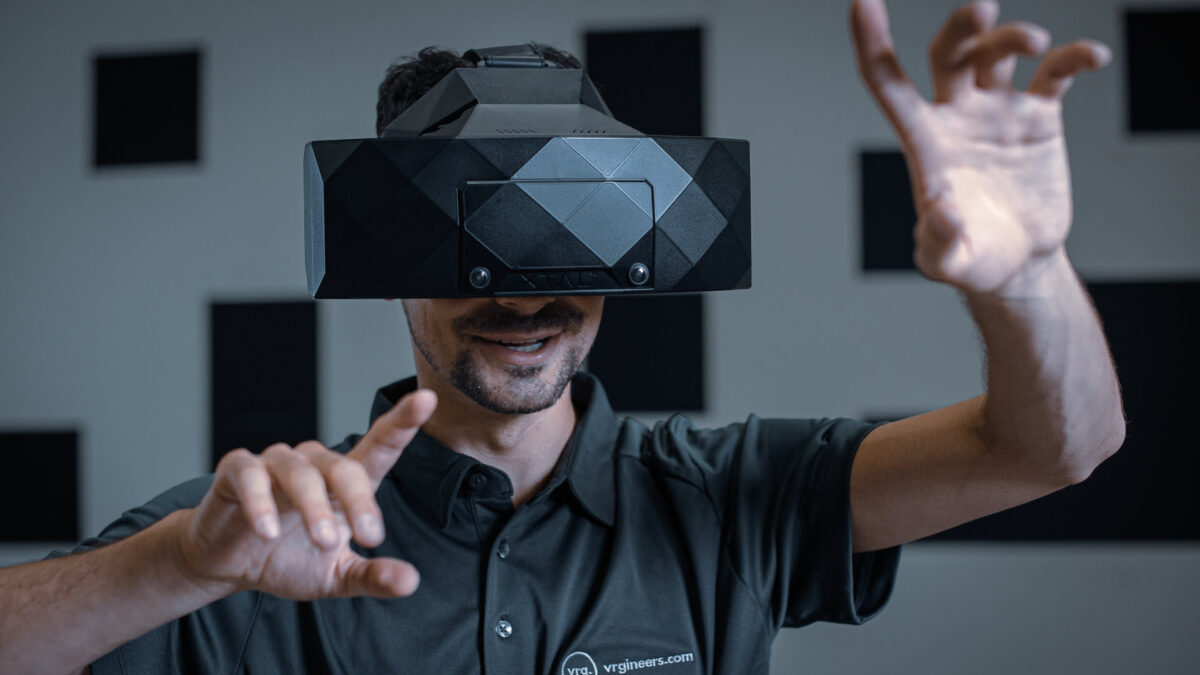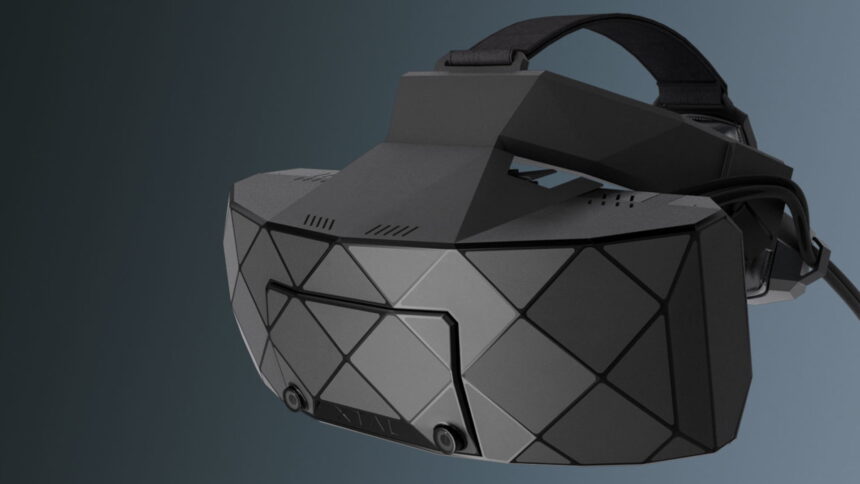High-end VR headset Xtal 3 gets wireless version

January 6, 2023:
Vrgineers has revealed some more details to us. The wireless version of the high-end VR headset is called "XTAL 3 with wireless module". Older, wired versions of the Xtal 3 will be upgradable with separately available wireless modules in the future.
The term "standalone" was an error in the press release. The "XTAL 3 with wireless module" cannot be used standalone. It is a headset with wireless module for wireless operation on a computer.
The Xtal 3 professional headset gets a wireless variant thanks to a streaming module that shifts some of the weight to the belt.
The VR headset Xtal 3 offers high-end features for the highest demands. Customers are mainly in the industrial and military sectors. Since April 2022, the headset from Vrgineers has been available for $8,900 (VR version) or $11,500 (mixed reality version with high-quality 4K cameras). With the MR version, fighter pilots can see real instrument panels and their real hands in addition to virtually simulated elements.
One remaining annoyance is the cable to a high-end PC. At CES 2023, Vrgineers announced the wireless "Xtal Wireless Headset", which has only one cable from the headset to a belt-worn module. It works with low-latency streaming according to the Wi-Fi 6E standard, which transmits in the six-gigahertz band.
Wi-Fi 6 for high-end VR streaming
Usually, the necessary data rate would be too high even for the modern standard. In conventional wired mode, the VR headset resolves with 3,840 by 2,160 pixels per eye, at a refresh rate of 75 Hz. It alternatively supports 2,560 by 1,440 pixels per eye at 120 Hz.

The uncompromising focus on image quality also has downsides, such as a bulky form factor. | Image: Vrgineers
Vrgineers developed a mode that runs at a compressed resolution of 2,560 by 1,440 pixels per eye and lowers the frame rate to 70 hertz. The solution uses proprietary technology from Imrnext, which also collaborates with companies like HP, HTC, and Nofio in the streaming sector.
The transmission technology sits on the waistband of the pants instead of on the head. The Vrgineers' belt module has built-in antennas and also serves as an adjustable-capacity battery pack. A prototype presented at CES weighs just over two pounds. A final version weighing half that will have a form factor comparable to a smartphone.
Before operating, users connect their PC graphics card via USB and DisplayPort to a proprietary access point from Imrnext. It converts the signal for transmission via Wi-Fi 6E. The manufacturer promises stable transmission quality. Imrnext's director of engineering and delivery Phil Purdy expresses confidence that the wireless VR headset can offer more uses.
"Freeing the cable from the XTAL will enable more dynamic use case scenarios and enhance the quality of single-user and multi-user simulation and training exercises,” said Purdy.
Third quarter delivery
“As a supplier to the defense industry, we strongly believe that the wireless XTAL will be the best choice for such use cases as machine and aircraft maintenance, rescue or firefighting operations as well as special forces training," explained Vrgineers CEO Marek Polcak. "Everywhere, where the total immersion, freedom, and high performance, is a must.”
Vrgineers calls its new wireless VR headset a "standalone virtual reality headset." It doesn't explain in what ways the device might be able to operate without a PC as an input device. It is also unclear whether older wired models of the Xtal 3 can be retrofitted for wireless use.
So far, Vrgineers only mentions an add-on module for the high-end PC VR headset Somnium VR1. There will be a wireless extension from the company for it after the release.
Pre-orders for the Xtal Wireless headset are being accepted now at the email address business@vrgineers.com. The manufacturer plans to ship in the third quarter of 2023.
Finnish competitor Varjo offers professional (wired) high-end alternatives with the VR-3 and XR-3. With the Varjo Aero (review), Varjo ventures into the segment of enthusiasts and sim fans for the first time.
The cheaper standalone VR headset Vive Focus 3 (review) already uses streaming via Wi-Fi 6E. During a multiplayer test round in the VR arcade Zero Latency, the transmission remained pleasantly stable with low latency.
Note: Links to online stores in articles can be so-called affiliate links. If you buy through this link, MIXED receives a commission from the provider. For you the price does not change.